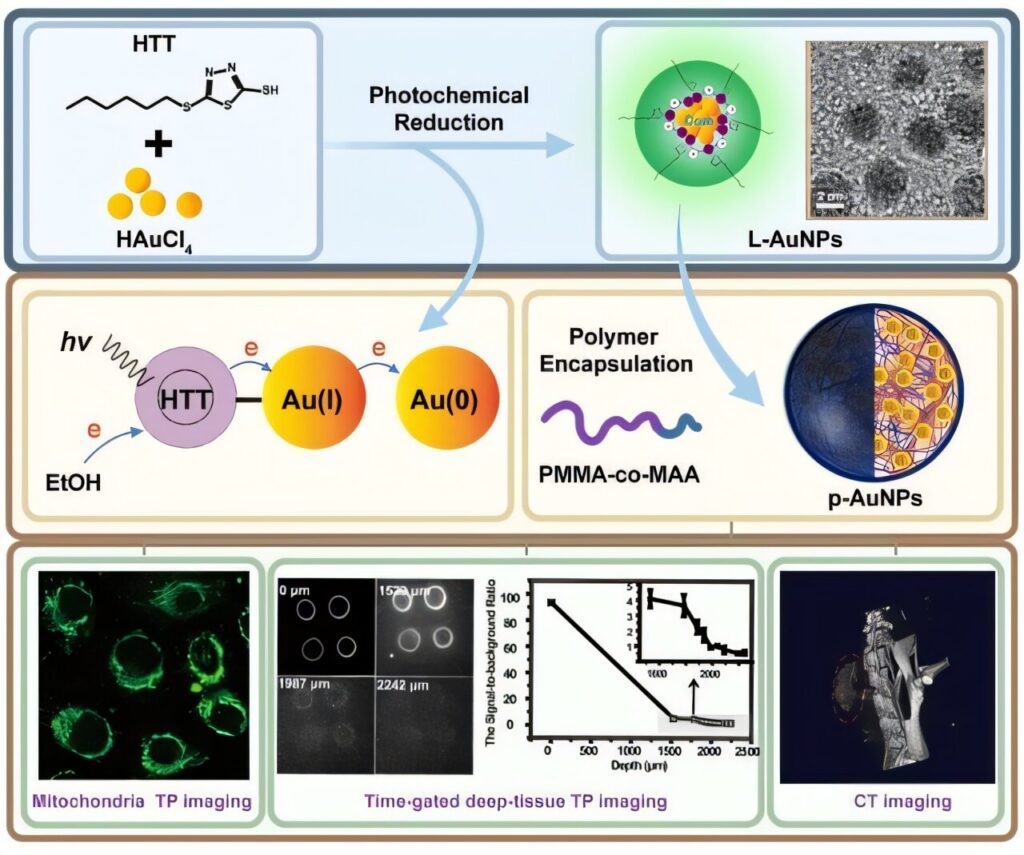Chinese scientists have recently developed a facile photochemical route for the preparation of gold nanoparticles with excellent luminescence properties.
Gold nanoparticles (AuNPs) are noble metal nanomaterials with unique physicochemical properties, easy functional modification and superior biocompatibility. They have been widely utilized in bio-sensing, bio-imaging, disease diagnosis, and cancer treatment.
Luminescent gold nanoparticles (L-AuNPs) larger than 2 nm have excellent performance and are of great value in biomedical imaging. However, their synthesis is mainly based on the thermal reduction method, which is complicated and labor-intensive, and severely limits their applications.
The Chinese scientists, led by Professor Jiang Yuqiang from the Institute of Genetics and Developmental Biology of the Chinese Academy of Sciences, introduced a facile photochemical method for synthesizing highly luminescent AuNPs coated with 2-n-hexylthio-1,3,4-thiadiazole-5-thiol (L-AuNP@HTT).
Results of the study were recently published in the journal Advanced Composites and Hybrid Materials, titled “Highly luminescent gold nanoparticles prepared via a facile photochemical method for bioimaging applications.”
These prepared L-AuNP@HTT, with a diameter of 3.19 nm, exhibited excellent photoluminescence (PL) properties: high quantum yield (φ, 12.9%), ultra-long luminescence lifetime (~ 1 μs), symmetric PL curve profiles, and narrow full width at half maximum (FWHM, ≤ 49 nm), among others.
They also showed exceptionally large two-photon absorption (TPA) cross sections (σ) of up to 8.0 × 104 GM (1 GM = 10-50 cm4 s photon-1). After further polymer encapsulation treatment (i.e., p-AuNPs), the TPA cross section per particle can be further increased to 1.1 × 108 GM, which is much higher than that of conventional fluorescent dyes such as Rhodamine and FITC (generally <102 GM).
These prepared p-AuNPs were also found to have excellent photostability and efficient mitochondrial targeting. Scientists achieved high-quality mitochondria-targeted two-photon excited luminescence (TPEL) imaging, time-gated delayed imaging of deep tissues and in vivo computed tomography (CT) imaging, based on the p-AuNPs.
The study was jointly completed by Professor Jiang Yuqiang’s team, in collaboration with Peking University, First Affiliated Hospital of Naval Medical University (Shanghai Changhai Hospital), Institute of Acupuncture and Moxibustion, Chinese Academy of Traditional Chinese Medicine, and Renmin University of China.
It paves the way for facile synthesis of high performance luminescent gold nanoparticles for a wide range of bio-imaging applications.


